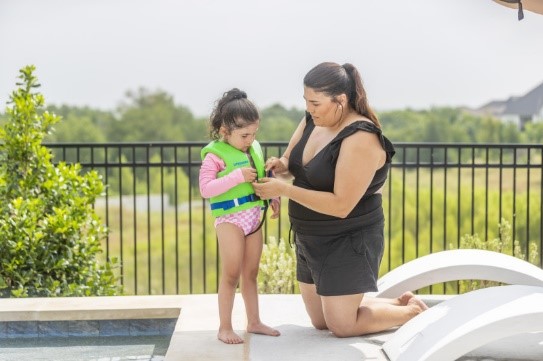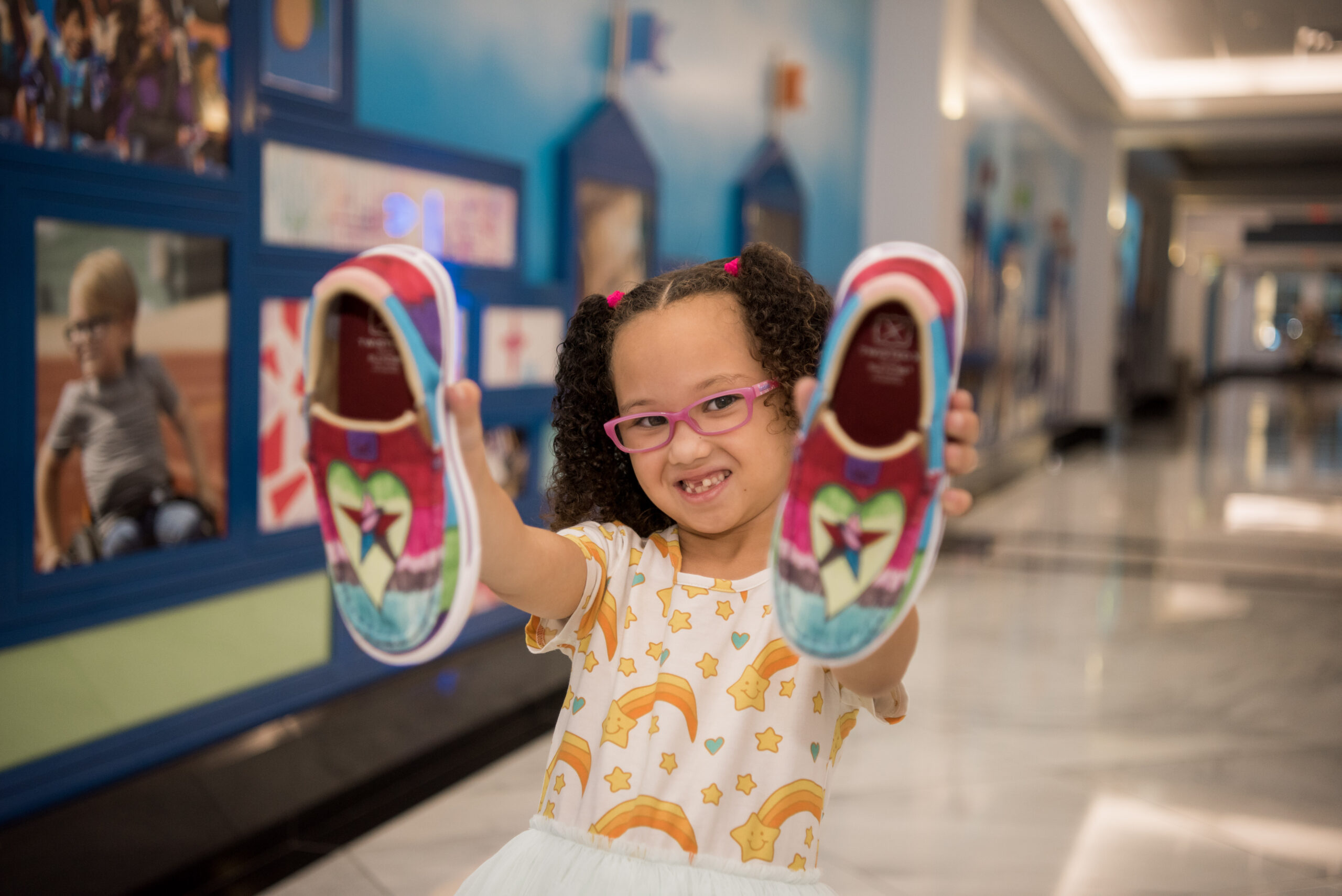More Than Cute: The Science Behind The Facility Dog Program
The wagging tails, slobbery kisses and paw handshakes from our five therapy dogs do so much more than bring joy to our patients. #ChildLifeWeek
By Kizzy Marco, CCLS

About five years ago, I was at work, walking down a long hallway wearing a pink feather boa, oversized yellow sunglasses, carrying a marshmallow launcher. A staff member I didn’t personally know was walking toward me, squinting his eyes.
When we were within close range, he read my badge, nodded, and said out loud, “Oh, Child Life.” It all made sense; this ridiculousness was Child Life. What he didn’t know was that I was on my way to help create joy for a patient who was at the end of his life, as requested by his grieving siblings. And nothing felt ridiculous about that. On the contrary, it felt painful and sad and very, very important.
Years later, in my current role as facility dog program coordinator (and handler of Ralph), I am often told I have the best job ever. And I agree with that to my core. In some ways it feels like I need to be pinched, because this cannot possibly be my job and my life.
What I don’t often talk about, however, is that it is not in any sense an easy job. In fact, there are many days that it is extremely difficult. While I am exceedingly proud of the comfort and happiness Ralph brings to so many, the reality is that in just one eight hour day as Ralph’s partner, I bear witness to some of the highest highs and the lowest lows experienced by patients and families.
On any given day, I may sit in utter silence while Ralph snuggles a patient who landed in the hospital after attempting suicide, and then leave to attend a breakout party for a child going home from the bone marrow transplant unit; we may distract a child from a blood draw and then leave to be present at the bedside of a dying child.
Some days we work to show a child who has been abused what gentleness looks like, and some days we put his paw print on a canvas to congratulate a family on reaching the end of treatment. Together as a pair we act as cheerleaders, tear-catchers, and secret-keepers. And the truth of this work is our hearts break often. It is the great challenge of this work, in my opinion, to continually put our hearts back together so that we can be available to the next child and family that need us.
Lucky for us, we also get to play a role in helping kids find joy through circumstances that are sometimes unimaginable, we get to celebrate achievements and milestones, however big or small, and we get to have a front row seat to the miracle of human resilience.
When I come to work, I try to always remember the enormous opportunity in front of me and Ralph, which far outweighs any challenge we encounter. At least a couple of times every week, a parent or caregiver tells me that meeting Ralph was the first time they saw their child smile in days or even weeks. That is the reason we do what we do.
And even beyond the remarkable stories that could be told about all five of our dogs and their impact on the lives of patients, there is actually scientific evidence that demonstrates the biologic benefits of what we do.
- Human-canine interaction is proven lower blood pressure and stress hormones, increases endorphins, and some research even suggests that regularly interacting with a dog may improve our immune systems, keeping us healthier.
- Animal-assisted therapy has been increasingly recognized as a way to mitigate trauma in the most vulnerable populations, something I have seen firsthand many, many times.
- Hospitalization can sometimes be so traumatic that kids actually cower in response to a simple knock at their door, for fear that something invasive or painful is coming their way.
It’s hard to describe the feeling of standing on the other side of the door with a golden retriever, smiling and hopeful to meet a new friend. No matter what the day brings, the gasp and excitement that follows the discovery that it’s actually Ralph at the door never gets old.
This past January, the facility dog program celebrated its fourth Cook Children’s anniversary. The program’s impact on patients, families and staff in that time is frankly incalculable. And though there is much more to it than meets the eye, the giggles, the security, the unconditional love and acceptance brought to the medical center each day by our five dogs is second to none. We will come back and do it again every day we possibly can.
References:
American Veterinary Medical Association. (2017). Animal-Assisted Interventions: Definitions. Retrieved from https://www.avma.org/KB/Policies/Pages/Animal-Assisted-Interventions-Definitions.aspx.
Braun, C., Stangler, T., Narveson, J., & Pettingel, S. (2009). Animal-assisted therapy as a pain relief intervention for children. Complementary Therapies in Clinical Practice, 15, 105-109.
Calcaterra, V., Veggiotti, P., Palestrini, C., DeGiorgis, V., Raschetti, R., Tumminelli, M., Albertini, R. (2015). Postoperative benefits of animal-assisted therapy in pediatric surgery: A randomized study. PLoS One, 10(6), e0125813.
Creagan, E. T., Bauer, B. A., Thomley, B. S., & Borg, J. M. (2015). Animal-assisted therapy at Mayo Clinic: The time is now. Complementary Therapies in Clinical Practice, 21(2), 101-104. doi:10.1016/j.ctcp.2015.03.002
Gilmer, M. J., Baudino, M. N., Goddard, A. T., Vicker, D. C., & Akard, T. F., (2016).
Animal-assisted therapy in pediatric palliative care. Nursing Clinics of North America. 51(3), 381-395.
Signal, T., Taylor, N., Prentice, K., Mcdade, M., & Burke, K. J. (2016). Going to the dogs: A quasi-experimental assessment of animal assisted therapy for children who have experienced abuse. Applied Developmental Science, 21(2), 81-93. doi:10.1080/10888691.2016.1165098
Vagnoli, L., Caprilli, S., Vernucci, C., Zangni, S., Mugnai, F., &Messeri, A. (2015). Can
presence of a dog reduce pain and distress in children during venipuncture? Pain Management
Nursing, 16(2), 89-95.


